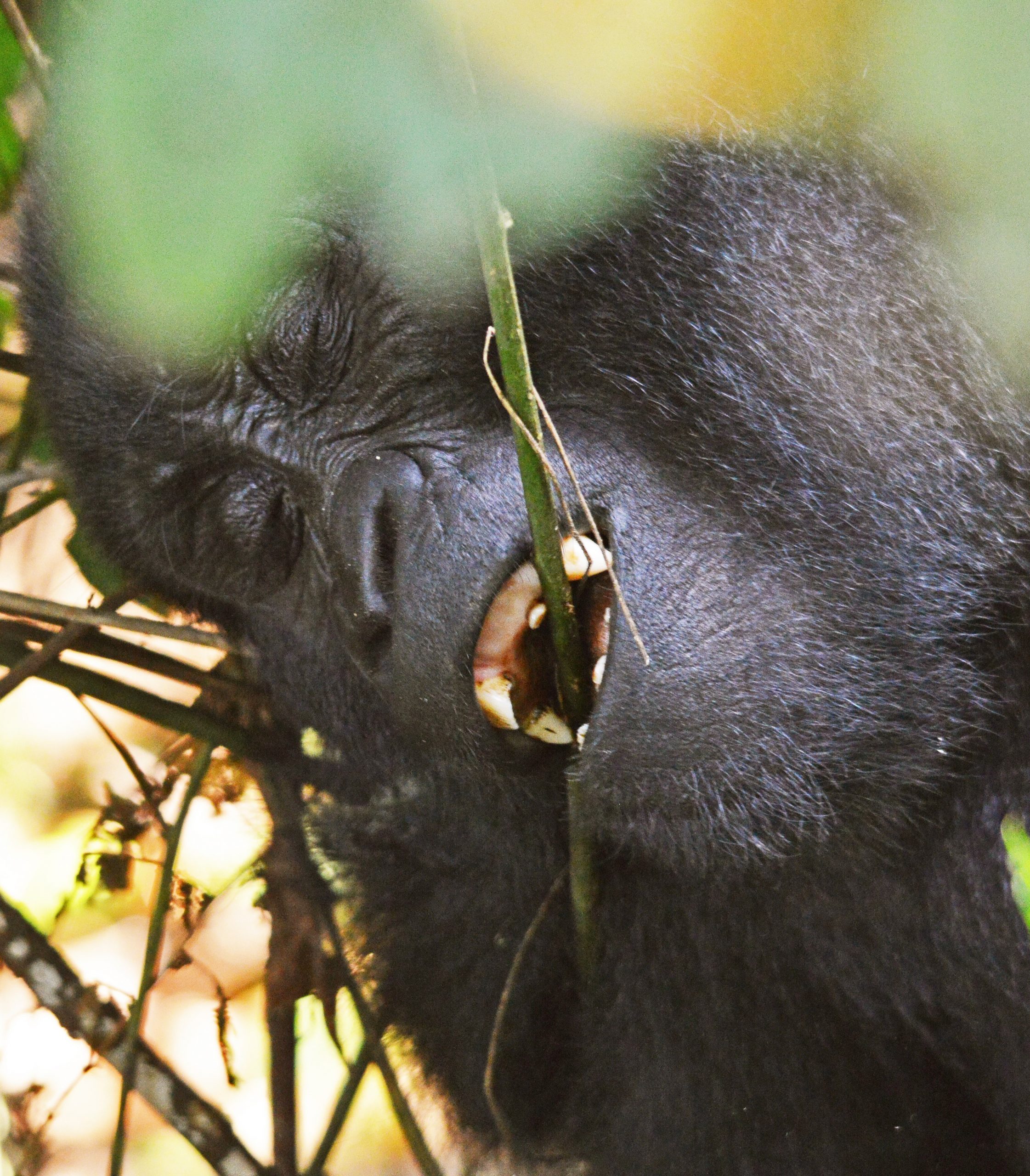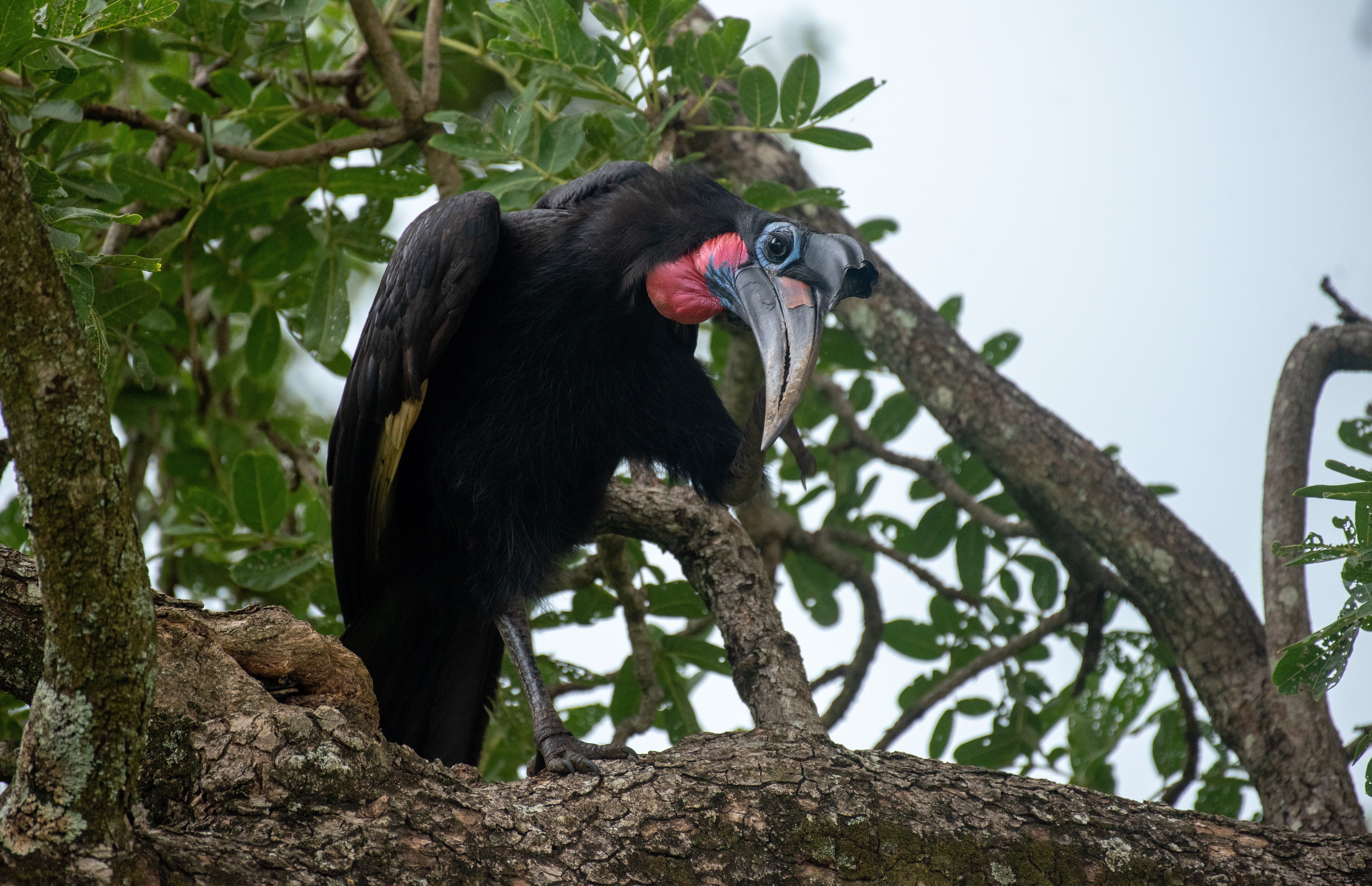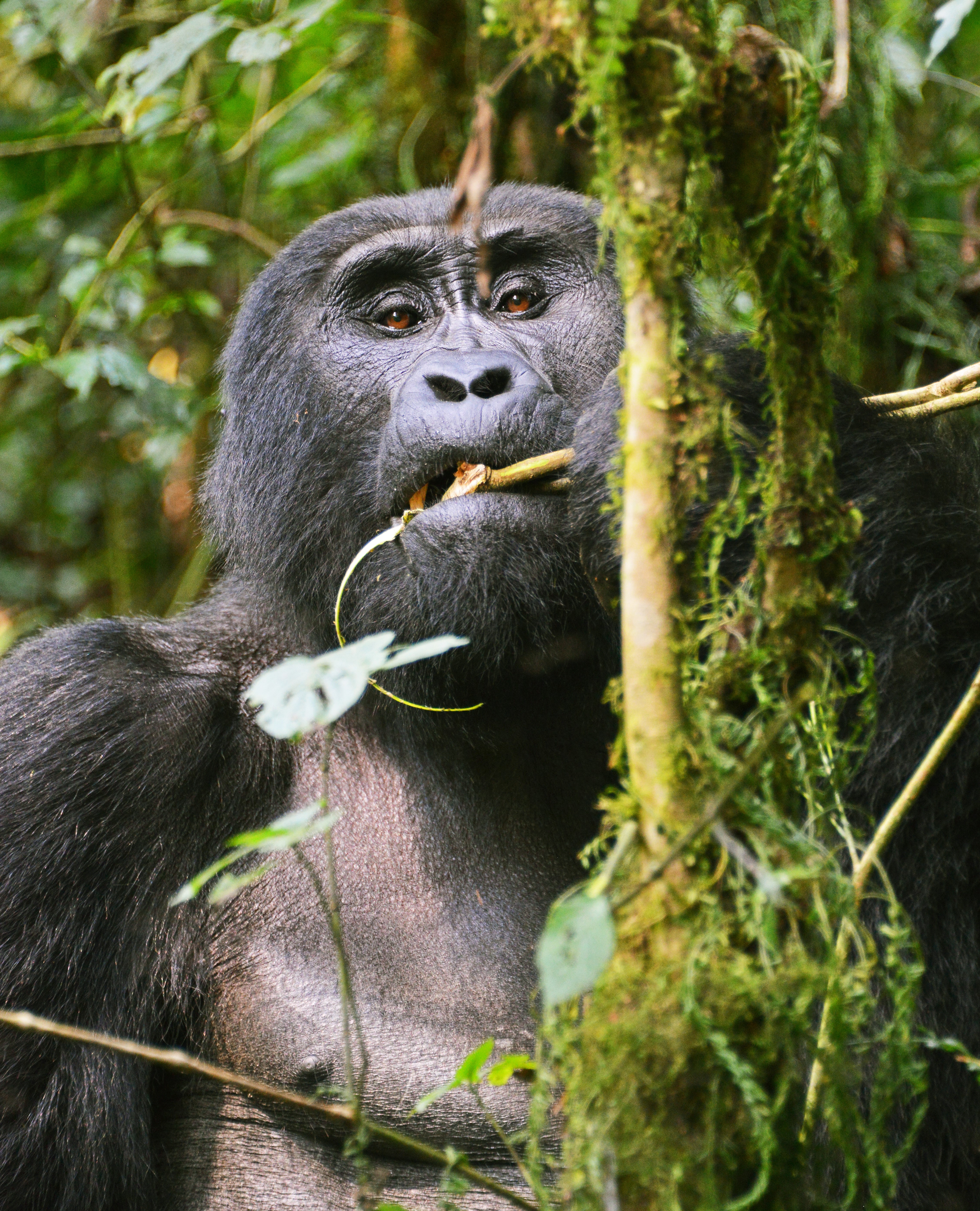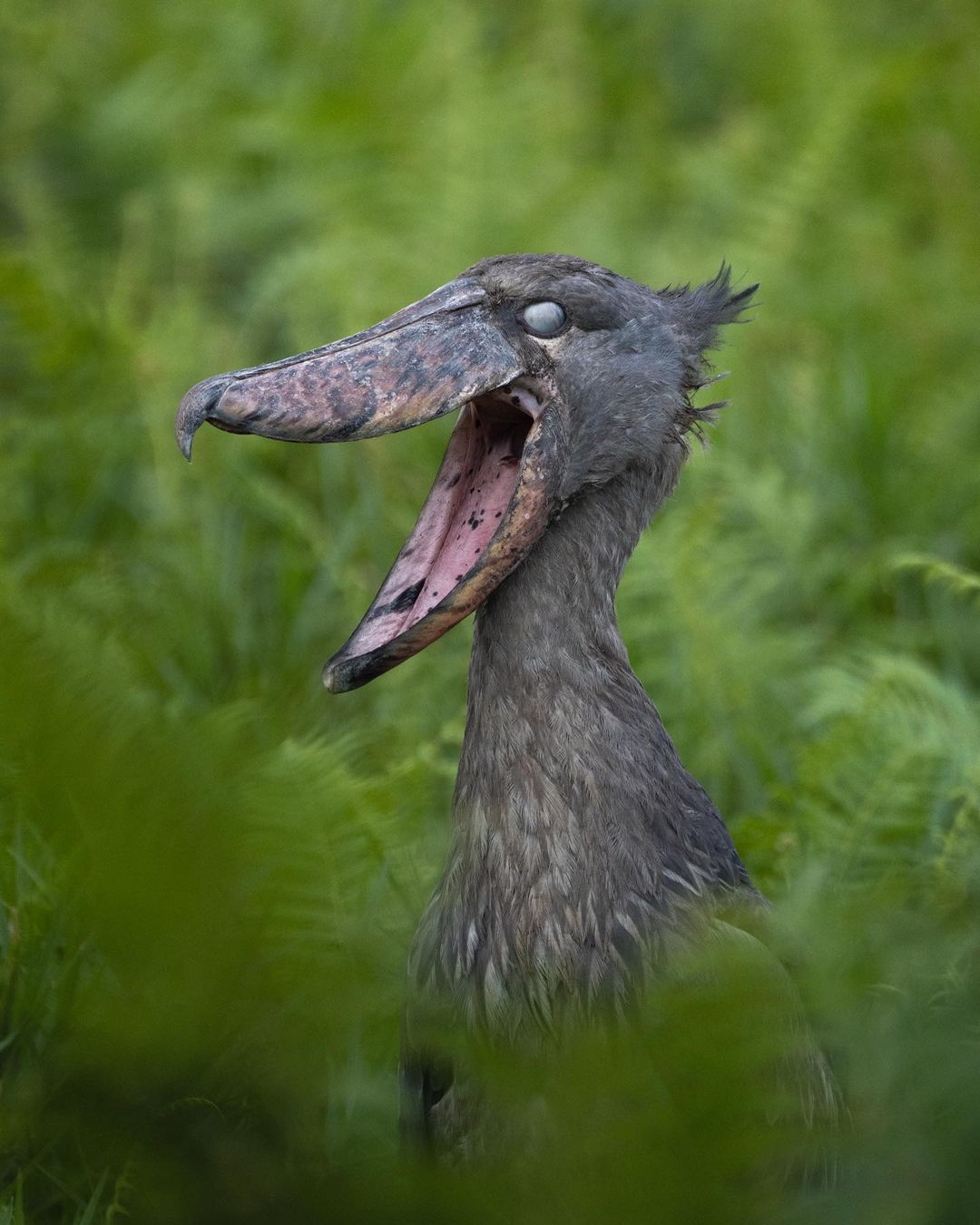
The Shoebill stork: Ancient Predator of Africa’s Wetlands.
The Shoebill stork: Standing tall above the wetlands of Africa, the shoebill stork is one of the world’s most remarkable bird species, captivating the hearts of nature lovers worldwide. This frightening, prehistoric-looking bird can attain a height of 5 feet (1.5 meters), has the third-largest bird beak in the world, and has a sharp-edged 1-foot (0.3-meter) bill. The shoebill is primarily found in forested and marshy environments.
Its long, thin legs and enormous beak combine to make it an extremely strong ambush predator. It can stand motionless for an extended period of time before snatching up its prey and consuming it whole. It is also significant to remember that the shoebill is classified by the IUCN Red List as a vulnerable bird species.
The Unique Features of the Shoe Bill Stork.

Shoebill storks are larger than they appear. They also consume fish like lungfish, which is something else that fascinates many about them.
Due to their surprisingly swift reactions, the storks’ prey never perceive them approaching any closer.
In addition, compared to other bird species, shoebills have some of the largest bills of any living bird in the world. This allows them to effortlessly move larger fish and prey.
The eyeballs on shoe bills are amazing and unique to them. How they could genuinely look you down is astounding. Even scientists are perplexed by their identity, which is why they placed it in its genus even though more current DNA research indicates shoebills and pelicans are connected in some way.
The shoebill’s feet aid in its environmental adaptation. They help it stay afloat on the watery vegetation while it hunts its meal, which is primarily fish. Meanwhile, the bird’s huge bill makes it easier for it to catch larger fish and other aquatic prey. Its thick feathers keep it warm even in cold climates that most birds find intolerable.
There are some intriguing myths about the shoebill stork. For instance, poachers were afraid to kill it because they thought doing so would bring bad luck to them. When fishermen saw or spoke the name of the bird in the swamp, they also thought it would not be a good day to go fishing. According to studies, the shoebill lived far further north during the early Holocene era. That is, in the wetlands that then covered the modern-day Sahara Desert.
Habitat and Distribution of the Shoebill Stork.

The shoebill is found in aquatic ecosystems throughout central and tropical Africa. Its range extends from southern Sudan to parts of the eastern Democratic Republic of the Congo, Uganda, Rwanda, western Tanzania, and the northern region of Zambia.
They are widespread in areas of Uganda’s tropical rainforests in the west of the nation as well as the Mabamba wetland on the Entebbe Peninsula.
The West Nile regions and South Sudan – particularly the Sudd have the highest concentration of the species. It serves as the species’ primary stronghold. There have been further occasional reports of shoebills in southwestern Ethiopia, Kenya, Malawi, the Central African Republic, and northern Cameroon.
However, it’s crucial to remember that the shoebill stork is threatened in several ways. The effects of human activity on the environment, such as disturbance by people and animals, fire damage of nests and breeding grounds, and habitat alteration and degradation, have a significant influence on the success of its breeding efforts.
The habitat of the species is also greatly impacted by oil exploration in the Sudd (South Sudan) and agricultural activities in Gambella (Ethiopia). Due to their high mortality rate during capture, transportation, and captivity, shoebills are also threatened by the illegal live bird trade.
Despite this, there are still a lot of unanswered questions concerning the Shoebill. For instance, the current data on populations and trends at various locations. The migration patterns, requirements for breeding and scavenging causes, and the volume of trade are an issue as well.
Viewing Opportunities and Conservation of the Shoebill Stork.
In Uganda, you can get a chance to view shoebills; we at Ibuth Safaris can assist you with this. They are found across Rwanda and Uganda, particularly in the Mabamba Wetland and surrounding forests.
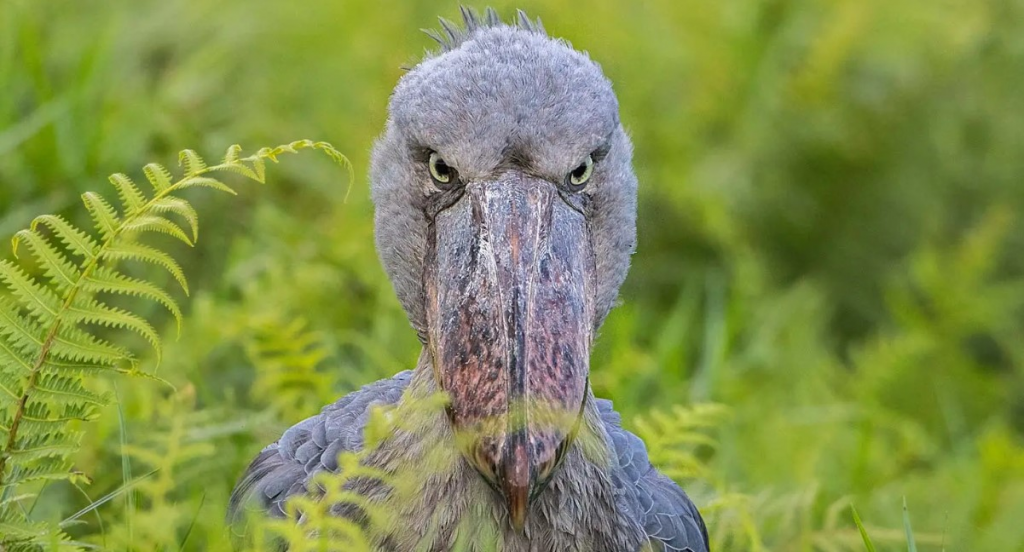
To preserve the habitat of the shoebill, conservation measures are being taken. The plans call for several actions, such as upholding trade restrictions, stepping up surveillance and spreading awareness, particularly regarding fire safety, preventing livestock from entering core breeding areas, carrying out appropriate Environmental Impact Assessments for oil and other innovations, creating management plans for Shoebill territories, and encouraging ecotourism initiatives that benefit communities by utilizing wetland ecosystems and generating sustainable income. Additionally, research is being conducted to close the major knowledge gaps.
In a nutshell, the shoe bill stork is truly a marvel of nature, a living testament to the wonders of Africa’s diverse ecosystems. Though elusive, catching a glimpse of this mysterious water bird is a once-in-a-lifetime experience that will leave a lasting impression.
So what are you waiting for? Start planning your safari to the remote wetlands of Africa and enjoy the world of the shoe bill stork. Witness its prehistoric presence and observe its captivating behaviours. That way, you will become part of the global effort to protect this remarkable species for generations to come.
The shoe bill may be difficult to spot, but the rewards of your quest will be tenfold. Embrace the thrill of the hunt, and let this magnificent creature inspire your adventurous spirit. The wetlands of Uganda and Rwanda are calling – will you answer? If you will, contact us at +256 393 247 137 / +256 742 678 918. Or email us at info@ibuthsafaris.com.

